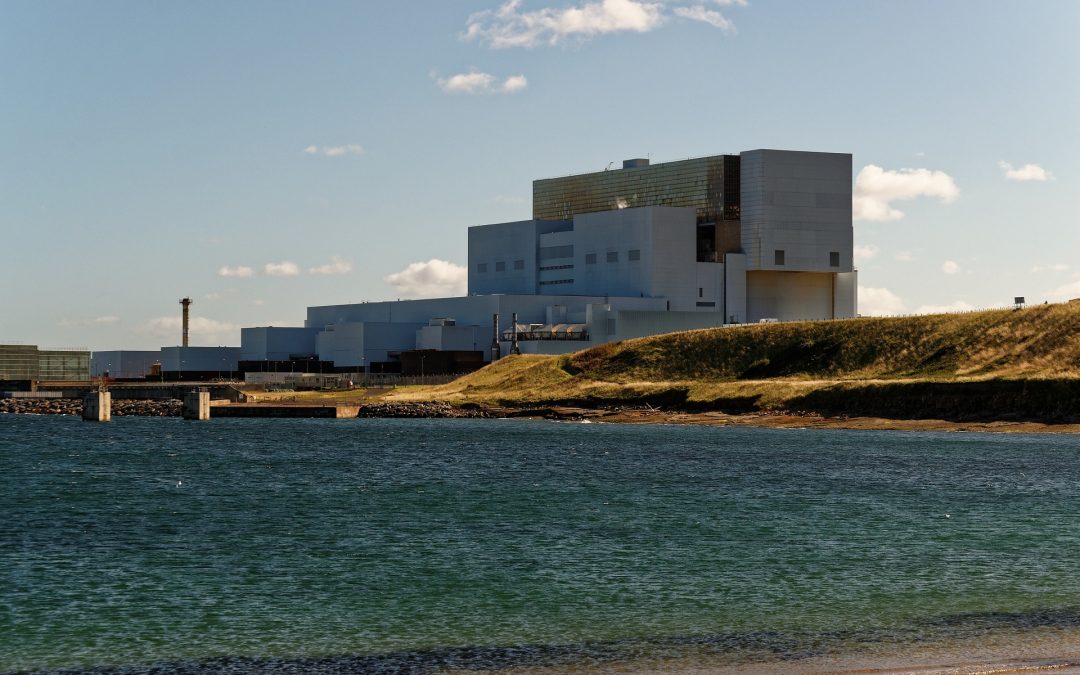Torness Power Station in East Lothian is a major landmark in the area and is one of Scotland’s two nuclear power stations. The power station has been operational since 1988 and generates enough electricity to power around 2 million homes. For those interested in learning more about the inner workings of the power station, Torness offers tours to the public.
During the tour, visitors will have the opportunity to see the various stages of electricity production, from the nuclear reactors to the turbines. The tour guides are knowledgeable and provide a clear explanation of how the power station operates. Safety is a top priority, and visitors are required to follow strict guidelines throughout the tour. Overall, the tour provides a fascinating insight into the production of electricity and the role that Torness Power Station plays in meeting the energy needs of Scotland.
Overview of Torness Power Station
Torness Power Station is a nuclear power station located in East Lothian, Scotland. It is operated by EDF Energy and is one of the two nuclear power stations in Scotland, the other being Hunterston B.
The power station has two advanced gas-cooled reactors (AGRs) which generate electricity by using nuclear fission to heat water, which then powers turbines. The AGRs at Torness Power Station are among the most reliable in the world, with a capacity factor of over 80%.
The reactors at Torness Power Station are cooled by carbon dioxide gas, which is a more efficient cooling medium than water. This allows the reactors to operate at a higher temperature, which in turn increases their efficiency.
Torness Power Station has been in operation since 1988 and has a total capacity of 1,248 megawatts. It generates enough electricity to power over two million homes and is a vital part of the UK’s energy infrastructure.
Tours at Torness Power Station
Torness Power Station offers tours to the general public, providing an opportunity to learn about nuclear power generation and the role Torness plays in the UK’s energy supply. The tours are conducted by knowledgeable and experienced guides who are happy to answer any questions visitors may have.
The tours are free of charge and are suitable for people of all ages. Visitors are required to book in advance, and tours are subject to availability. The visitor centre is open from Monday to Friday, and tours typically last around two hours.
During the tour, visitors are taken around the site, including the reactor hall and turbine hall. The tour guides explain how the power station works, the safety measures in place, and the environmental impact of nuclear power generation.
Visitors are also shown the control room, where they can see the operators at work and learn about the complex systems and procedures involved in running a nuclear power station.
The tour is an excellent opportunity for anyone interested in science, engineering, or the environment to learn more about nuclear power generation and its role in the UK’s energy supply. Visitors are encouraged to ask questions and engage with the tour guide to get the most out of their visit.
Visitor Experience
Visitors to Torness Power Station in East Lothian can expect an informative and educational experience that provides a unique insight into the workings of a nuclear power station. The tour is designed to be accessible to all, regardless of prior knowledge or experience.
The visitor centre at Torness Power Station features a range of exhibits, diagrams, and displays that help to explain the science behind nuclear power generation. Visitors can learn about the different types of energy produced at the station, as well as the safety measures in place to ensure the smooth running of the facility.
One of the highlights of the tour is the opportunity to see the power station up close. Visitors are taken on a guided tour of the facility, where they can see the various components of the power station in action. The tour provides a fascinating contrast between the high-tech machinery used to generate power and the natural beauty of the surrounding landscape.
Throughout the tour, visitors are provided with clear and concise explanations of the various processes involved in nuclear power generation. The knowledgeable guides are on hand to answer any questions visitors may have and to provide further insights into the workings of the power station.
In addition to the informative aspects of the tour, visitors are also treated to some stunning views of the surrounding area. The power station is situated in a picturesque location, with views over the North Sea and the rugged coastline of East Lothian.
Safety Measures
At Torness Power Station, safety is a top priority. The station follows strict safety protocols to ensure the well-being of its workers and visitors.
Before entering the station, visitors are required to attend a safety briefing where they are informed of the safety measures in place. The briefing covers topics such as emergency procedures, personal protective equipment (PPE), and potential hazards.
All workers at Torness Power Station are required to wear appropriate PPE, including hard hats, safety glasses, and high-visibility clothing. The station also has strict rules regarding the use of mobile phones and other electronic devices to prevent distractions and ensure focus on the task at hand.
In addition to these measures, Torness Power Station has a dedicated safety team that conducts regular safety audits and inspections. The team is responsible for identifying potential hazards and implementing measures to mitigate risk.
Torness Power Station also has an emergency response team that is trained to respond to any potential emergencies. The team is equipped with the necessary equipment and resources to deal with any situation that may arise.
Location and Accessibility
Torness Power Station is located near the town of Dunbar in East Lothian, Scotland. It is easily accessible by car and is located just off the A1, which is the main road that connects Edinburgh and London.
Visitors can follow the signs to the power station, which is clearly visible from the road. There is ample car parking available on site, and visitors can park for free.
For those travelling by public transport, the nearest train station is Dunbar, which is approximately 5 miles away from the power station. Visitors can then take a taxi or bus to reach the power station.
The power station is located in a beautiful coastal area of Scotland, which visitors can explore before or after the tour. There are many attractions nearby, including the John Muir Country Park, which is a popular spot for hiking and wildlife watching.
Surrounding Area
Torness Power Station is located in a beautiful area of East Lothian, offering visitors a variety of attractions and activities to enjoy.
For those who enjoy walking, there are several scenic routes to explore in the surrounding area. The John Muir Way, a 134-mile long-distance walking route, passes through the nearby town of Dunbar and offers stunning views of the coast and countryside.
Wind enthusiasts can take advantage of the strong sea breezes in the area and enjoy a range of activities such as kite surfing and windsurfing.
Groups interested in learning more about the power station can arrange a tour and gain insight into how it operates.
The nearby Belhaven Bay is a popular beach with visitors and locals alike. It offers miles of golden sand and is perfect for a relaxing day out.
For those who enjoy exploring nature, the area is home to a variety of wildlife and flora. The rocky shoreline provides a great opportunity to spot seals and seabirds, while the nearby John Muir Country Park is a haven for wildflowers and butterflies.
There is also a caravan site nearby for those who wish to stay overnight and enjoy the local area at their leisure.
The local community is welcoming and friendly, with several events and festivals taking place throughout the year. The East Lothian Council provides information on local attractions and things to see in the area.
Power Generation Process
Torness Power Station is an operational nuclear power station located in East Lothian, Scotland. The power station generates electricity using advanced gas-cooled reactors (AGRs) that use carbon dioxide gas as a coolant.
The power generation process at Torness Power Station involves several steps. The following are the main steps involved in generating electricity at Torness Power Station:
- Reactors: The power station has two gas-cooled reactors that use enriched uranium as fuel. The reactors generate heat through a controlled nuclear reaction.
- Cooling: The heat generated by the reactors is used to produce steam, which drives turbines to generate electricity. The cooling system at Torness Power Station uses seawater from the North Sea to condense the steam back into water.
- Turbines: The turbines are connected to generators that produce electricity. The power station has two sets of turbines and generators, one for each reactor.
- Transmission: The electricity generated at Torness Power Station is transmitted to the National Grid, which distributes it to homes and businesses across Scotland and England.
The technology used at Torness Power Station is designed to ensure safe and reliable operation. The power station has a range of safety systems and procedures in place to protect workers, the public, and the environment.
Construction and Engineering
Torness Power Station was constructed in the 1980s and is a prime example of innovative engineering and construction. The power station was designed with two AGR (Advanced Gas-cooled Reactor) units, each with a capacity of 640 MW. The station was built on a 150-acre site and took around 7 years to complete.
The engineering team at Torness Power Station played a crucial role in the design and construction of the plant. The team was responsible for ensuring that the plant was built to the highest standards of safety and efficiency. The team used innovative techniques and technologies to ensure that the plant was built to withstand the harsh conditions of the East Lothian coast.
The construction of Torness Power Station was a major undertaking. The site required extensive preparation before construction could begin. The team had to excavate the site and build a foundation that could support the weight of the reactors and other equipment. The construction team also had to build a complex network of tunnels and pipes to transport water and other materials around the site.
The structures at Torness Power Station are designed to withstand extreme weather conditions. The buildings are constructed from reinforced concrete and are designed to resist the force of high winds and waves. The reactors themselves are housed in a large steel containment vessel that is designed to withstand the force of an explosion.
Customer Care and Services
At Torness Power Station, we prioritize customer care and services to ensure that our visitors have a safe and enjoyable experience. Our knowledgeable and friendly staff are always on hand to answer any questions you may have and help you navigate the site.
We offer a range of services to make your visit as comfortable as possible. Our facilities include:
- Free parking for visitors
- Wheelchair accessibility
- Restrooms with baby changing facilities
- A café serving hot and cold drinks and snacks
In addition to these services, we also offer guided tours of the power station. Our tour guides are trained to provide clear and concise information about the power station’s operations and answer any questions you may have.
We understand that safety is a top concern for our visitors, and we take this very seriously. Before the tour, all visitors are given a safety briefing and are required to wear appropriate safety gear, including hard hats and safety glasses. Our guides also ensure that visitors stay in designated areas and follow all safety protocols.

